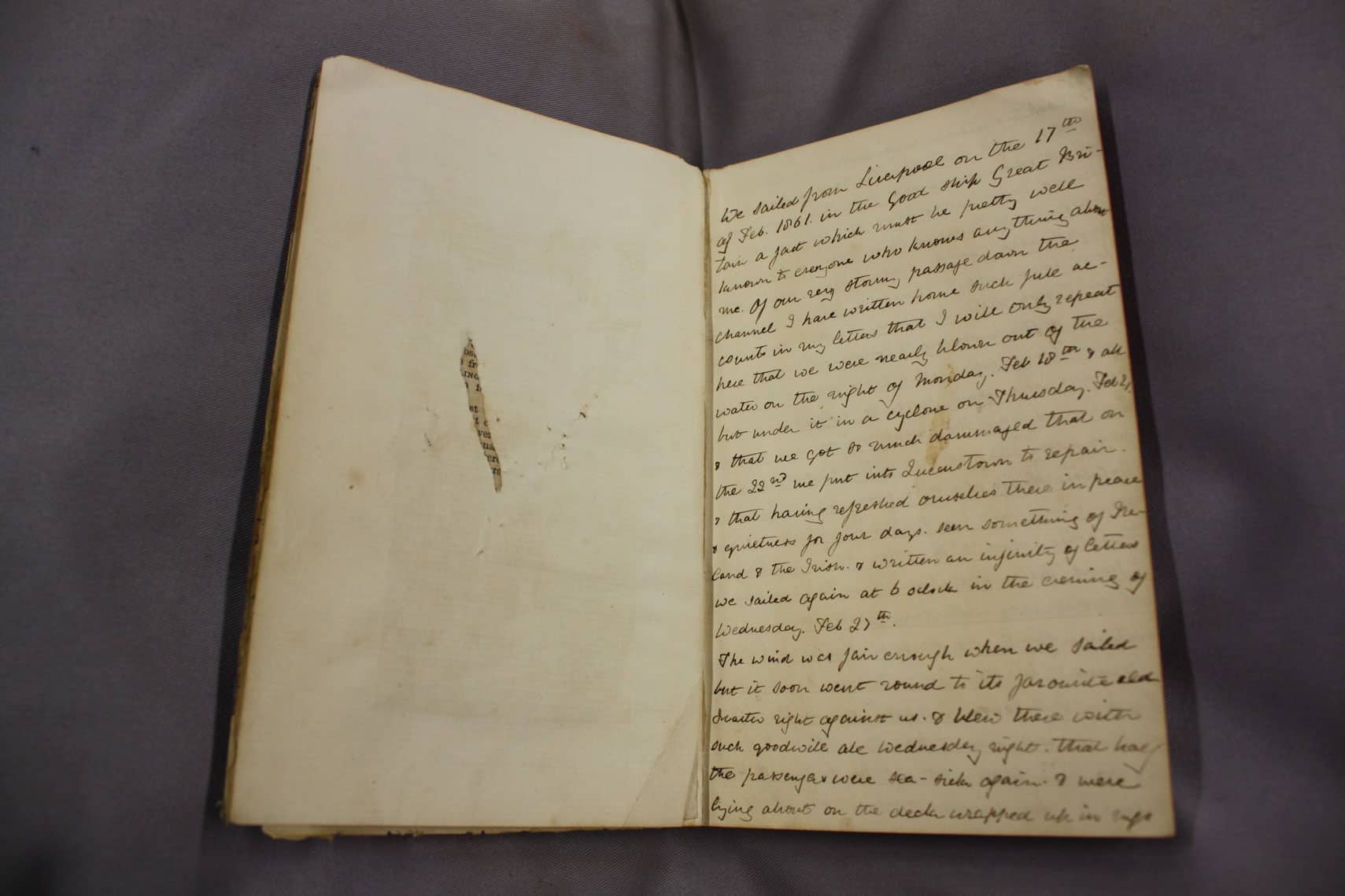- This is Rachel Henning’s diary which she wrote while traveling from Liverpool, England to Melbourne, Australia on the SS Great Britain in 1861.
- In her diary, Rachel writes about her life on board as a first-class passenger. She describes how she spent her time which included playing games and exploring the ship.
- She also comments on the other passengers and crew, writing about those she got on well with, like Captain Gray, and those she didn’t. She also recorded various births and deaths on board during the voyage.
- It was the second time Rachel, who was born in Somerset, had emigrated to Australia. She briefly lived there between 1854-1856, but after struggling to get used to life in the country, she returned to Britain. However, by February 1861 she had decided to return to Australia and set out to join other family members already living there.
The Story
Rachel’s journey
Rachel Henning left Liverpool on board the SS Great Britain on 17 February 1861, she was travelling on her own to Australia. The following day the ship was caught in a storm in the Irish Sea and then had to spend several days undergoing minor repairs in Queenstown, Ireland. On the 27 February the ship left Ireland for Australia.
In her diary Rachel recorded what life was like for her onboard, “One day passes so like another that there really is very little to write about. They pass pleasantly enough too”. She spent a lot of her time playing games, including chess, sewing, reading, and walking on the top deck. During the voyage Captain Gray gave her and a few other passengers a tour of the ship, including the opportunity of climbing down into the engine room – “Everything came off black and oily, neither our hands nor our dresses were improved thereby, and as to our hoops, the less said the better. They were sorely in the way, and I doubt if they will ever regain their shape.”
She also wrote about other passengers. Rachel shared her cabin with Mrs Bronchorst, unfortunately we don’t know her first name as Rachel did not record it in her diary. However, she did write that Mrs Bronchorst complained a lot and “ought never to have come to sea, as she has no idea of making the best of things”!
The SS Great Britain finally arrived in Melbourne on 3 May 1861. When she left the ship Rachel wrote in her diary – “You get attached to a ship which has carried you safely 15,000 miles, and she is a splendid vessel and no mistake.”
From Melbourne, Rachel travelled on to Sydney on a different ship before going to join her brother, Biddolph in Queensland where they started a sheep station (farm). Rachel remained in Australia for the rest of her life, enjoying an outdoor way of life that included sleeping outside, cooking on campfires and horse riding.



